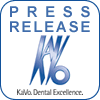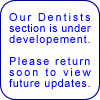Economic
Savings Treating Root Caries with Ozone or Air Abrasion
By H Domingo, J Holmes,
L Abu-Naba'a, H Al Shorman, A Baysan
and R Freeman
Queen's University of Belfast, United Kingdom |
| Objectives:
To assess if new technologies in a dental practice could
reduce the time and cost for treatment of primary root
caries. |
Methods: Air Abrasion (PrepStart, Danville,
USA), the HealOzone unit (CurOzone USA and KaVo) and a glass
ionomer filling material (Fuji9, GC Corp, Japan), were selected
for comparison with traditional drill and fill (D&F) procedures
and materials for the management of primary root caries (PRCL’s)
in an ageing patient group (>60, mean 70.8yrs, SD 7). A
total of 68 patients with 3 lesions each (204 PRCL’s
in total) were recruited. The lesions were randomly assigned
into three groups; treatment with Ozone, or air abrasion and
filling or traditional drilling and filling (D&F).
Results: 64 patients completed this study.
There were no observed adverse events. Air abrasion decreased
the mean time for cavity preparation by 4 times when compared
to traditional rotary drills (67 seconds (SD 12) compared
to 4.5 minutes (SD 1.75 minutes)(p < 0.05)). The mean time
required for ozone treatment was 40 seconds (SD 5 seconds)
for each lesion, whilst for traditional D&F, the average
time needed was 27 minutes (1620 seconds) (SD 8 minutes) (p
< 0.01). Ozone treatment was faster by a factor of 40.
The cost of the treatment was assessed. The average cost to
treat a lesion with ozone was 3.6 times less compared to the
average cost for each traditional filling.
Conclusions: The new technologies of air
abrasion and Ozone offer economic savings for dental practices
and patients. Compared with conventional drilling and filling
of root caries, Ozone treatment is 40 times faster and 3.6
times cheaper.
Keywords: Gerontology, Health services research,
Cariology, Therapeutics, Quality of life
First Author
Presenting
Helene Domingo
Health Services Research
Queen's University of Belfast
Dental School
 |
|




